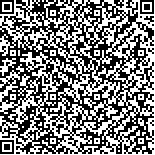郭立颖,李红,马将,等.电热针联合康复训练对早期脑卒中后偏瘫患者上肢运动功能的影响[J].中华物理医学与康复杂志,2025,47(4):307-312
扫码阅读全文

|
| 电热针联合康复训练对早期脑卒中后偏瘫患者上肢运动功能的影响 |
|
| |
| DOI:10.3760/cma.j.cn421666-20231114-00892 |
| 中文关键词: 脑卒中 偏瘫 上肢运动功能 电热针 表面肌电图 |
| 英文关键词: Stroke Hemiplegia Upper limbs Motor functioning Electrothermal acupuncture Acupuncture Surface electromyography |
| 基金项目:河北省中医药管理局科研计划项目(2024130) |
|
| 摘要点击次数: 1841 |
| 全文下载次数: 1563 |
| 中文摘要: |
| 目的 观察电热针联合康复训练对早期脑卒中后偏瘫患者上肢运动功能的影响。 方法 募集符合入选标准的早期脑卒中后偏瘫患者36例,按照随机数字表法将其随机分为电热针组和对照组,每组患者18例。对照组患者接受常规康复训练,电热针组在此基础上增加电热针治疗。电热针治疗每日1次,每次30 min,每周治疗6 d,连续治疗3周。于治疗前和治疗3周后(治疗后)采用上肢Fugl-Meyer运动功能评定量表、香港版偏瘫上肢功能测试和改良Barthel评定量表分别评估2组患者上肢运动功能、上肢功能实用性和日常生活活动能力,并同时采用表面肌电图(sEMG)检测2组患者上肢各关键肌群的均方根值,并计算出屈肘和伸肘时主动肌和拮抗肌的同步收缩率。 结果 治疗后,2组患者的上肢Fugl-Meyer评分、香港版偏瘫上肢功能测试和改良Barthel评分较组内治疗前均有显著改善(P<0.05),且电热针组治疗后上述指标均显著优于对照组治疗后,差异均有统计学意义(P<0.05)。治疗后,2组患者腕屈肌群、腕伸肌群和屈肘时肘屈肌群的均方根值较组内治疗前均显著改善(P<0.05),且电热针组治疗后腕伸肌群和伸肘时肘伸肌群的均方根值分别为74.58(16.20,81.42)μV和69.59(34.40,149.56)μV,显著优于对照组治疗后,差异均有统计学意义(P<0.05)。治疗后,电热针组伸肘时的同步收缩率较组内治疗前显著改善(P<0.05)。 结论 电热针联合康复训练可显著改善早期脑卒中后偏瘫患者的上肢运动功能、手功能实用性和日常生活活动能力,增强其伸肘和伸腕肌群的肌力,促进伸肌群肌纤维募集,降低肘关节异常协同运动模式。 |
| 英文摘要: |
| Objective To observe any impact of supplementing conventional rehabilitation training with electrothermal acupuncture on the upper limb motor functioning of hemiplegic stroke survivors. Methods Thirty-six hemiplegic persons who had recently survived a stroke were divided at random into an electrothermal acupuncture group (n=18) and a control group (n=18). Both groups received conventional rehabilitation training, while the electrothermal acupuncture group was additionally provided with daily 30-minute sessions of electrothermal acupuncture, 6 days per week for 3 weeks. Before and after the treatment everyone′s upper limb motor functioning was quantified using the Fugl-Meyer assessment (FMA-UE), and their ability in the activities of daily living (ADL) was assessed using the modified Barthel index (MBI). The Hong Kong version of the functional test for the hemiplegic upper extremity (FTHUE-HK) was also administered. Surface electromyography (sEMG) was employed to compute the co-contraction ratios (CRs) of the agonist to antagonist muscles during elbow flexion and extension. Results After the treatment, both groups exhibited significant improvements in their average FMA-UE, FTHUE-HK and MBI results, but with significantly greater improvement in the electrothermal acupuncture group. The root mean square values of the wrist flexor and extensor and elbow flexor muscles during flexion showed significant improvement in both groups, with the average values in the electrothermal acupuncture group significantly better than those of the control group. The CR values during elbow extension in the electrothermal acupuncture group demonstrated significant improvement compared to before the treatment. Conclusions Supplementing conventional rehabilitation measures with electrothermal acupuncture can better increase the strength of the elbow and wrist extensor muscles in the early days after a stroke. It promotes the recruitment of muscle fibers in the extensor muscle group, reduces abnormal coordination patterns in the elbow joint, and improves upper limb motor function, the practicality of hand function, and ability in the activities of daily living. |
|
查看全文
查看/发表评论 下载PDF阅读器 |
| 关闭 |